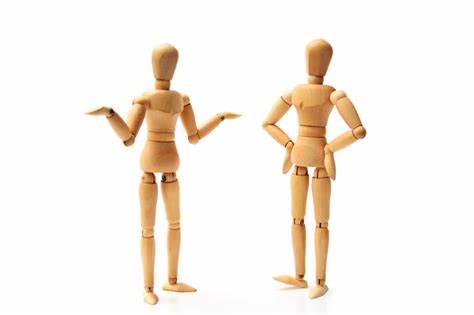Body language often signals covert thoughts to others, often unintentionally and even unwittingly. To interpret someone else’s body language accurately however, be sure to factor on the full cluster of signals you receive, the other person’s habitual postures and even the context of the situation. For example, crossed legs may suggest some form of disagreement or defensiveness – or it may only mean your listener is more comfortable and relaxed that way!
PALM GESTURES
-
- Palm up: is seen as submissive, non-threatening and indicates honesty.
- Palm down:gives you immediate authority when combined with a request
HAND TO FACE GESTURES
- Hand to face gestures are very hard to interpret but often mean that some negative thought has entered the person’s mind which could range from deceit to apprehension. The context and the gestures preceding these may give you more clues.
- If people cover their mouth or stroke their cheek with their index finger while you are speaking, it can mean they think you are lying, at which point you should stop and ask “Would someone care to comment on what I’ve said?”
- If you cover your own mouth while you are speaking, it may suggest to others that you are lying! This is called a ‘mouth guard’.
- Note also ‘displaced mouth guards’, which are more common among adults and may also prompt your listener to think you are lying. Eg Nose scratch, ear tug or neck/collar rub while you are speaking.
- If you think they are uncomfortable with what you have said, ask: I can understand this must be hard, can you tell me more about it?/How do you feel about what I have just said?
FOLDED ARM GESTURES
- We fold our arms across our chest when we are nervous, negative or defensive. People will often take an arms folded position when they disagree with what they are hearing for example.
- Crossed arms with thumbs pointing up may show that we have a self-confident attitude and still provide us with a feeling of protection.
CROSSED LEG GESTURES
- When crossed legs are combined with crossed arms the person has possibly withdrawn from the conversation and is quite likely to be on the defensive or otherwise in disagreement with you.. (The ‘Body Lock’.)
- People may also stand with arms and legs crossed when they don’t know others in a group well.
- You can unlock a defensive Body Lock through mirroring the other person, engaging in firm eye contact and then slowly un-crossing your own arms and legs. (See also below.)
EYE SIGNALS
- THE BUSINESS GAZE: Imagine a triangle between the eyes going up to the forehead and consciously gaze here to create a serious atmosphere.
- THE SOCIAL GAZE: Imagine a triangle between the eyes and the mouth. Gazing here creates a more social atmosphere.
- THE INTIMATE GAZE: The gaze is across the eyes and below the chin to other parts of the person’s body. Men and women use it to show interest in each other.
- One of the most powerful and positive responses to any type of gaze is first, to return it <”The eyes are the windows of the soul”>, and secondly to smile (unless this would be quite inappropriate at the time, so pick your moment!).
- Note, many people may avoid eye-contact through shyness or nervousness – but it often signals a lack of trust and even dishonesty to others.
CONTROLLING A PERSON’S GAZE
- We avert our gaze to indicate to someone that it is our turn to talk if they are talking, or their turn to talk if we are talking.
- When you are using a pen or a pointer to show someone information you can lift the pen and hold it between your eyes and theirs. The person will follow the pen and look at you.
- Look from one person to another covering all the people in the room to signal that you wish to include them all in what you are saying. <’The eye-sweep’.> This is especially important when you are presenting vital information to others.
TERRITORIAL AND OWNERSHIP GESTURES
- Leaning against other people or objects shows a territorial claim.
- Leaning back in a chair with hands clasped behind the head suggests <unwitting?> superiority.
- Leaders tend to be the first in a group to walk through a doorway.
- When the fingers of each hand, straight and spread out, are brought together so that each finger-tip touches a finger-tip on the other hand <’Steepling’>, this suggests that that person is about to make a decision – at which time the speaker should say no more as they may well not be heard!
MIRRORING
- People may often mimic each other’s posture and gestures to show they are in agreement or understand each other perfectly, and are thinking along the same lines. <’Mirroring.’>
- You can make others more comfortable in difficult meetings by mirroring their posture and gestures.

Comments (0)